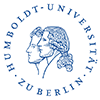Hydro-diversity: A Waterscape Model of the Medieval Western Indian City
Authors
In monsoon-dependent South Asia, harvesting and managing water is a necessity. Thus, monuments and modified landscapes related to irrigation, water storing and water worship represent a large share of Indian architectural heritage. Yet, this rich corpus and its attached hydrological knowledge awaits full recognition: thus far, documentation and studies focus on the most visible elements, especially stepwells, tanks and other dug facilities. Hydro-structures are generally considered in an isolated manner and lack contextualisation. Following the observations of English chaplain Edward Terry (1590–1660), this paper aims to explore the relationship between the medieval Indian city and the presence of monumental, often religiously connoted, hydraulic constructions. Based on archaeological and historical data, the paper proposes a fresh look at the hydraulic elements in the larger context of the city. The main argument rehabilitates the artificial lake and underlines its crucial function in plain regions that depend on a sufficient refilling of aquifers. In Western India, the typical city of the Solanki and later the Vaghela and the Muzaffarid dynasties had access to a broad variety of water sources capable of meeting the needs of multiple religious and secular activities (hydro-diversity). This generous waterscape and its multifaceted developments reflect on functions of sociability and religiosity in the city. Water here appears as an essential identity marker of urbanity.
Copyright (c) 2024 Sara Keller

This work is licensed under a Creative Commons Attribution-NonCommercial-NoDerivatives 4.0 International License.
Copyright (c) 2024 Sara Keller

This work is licensed under a Creative Commons Attribution-NonCommercial-NoDerivatives 4.0 International License.




